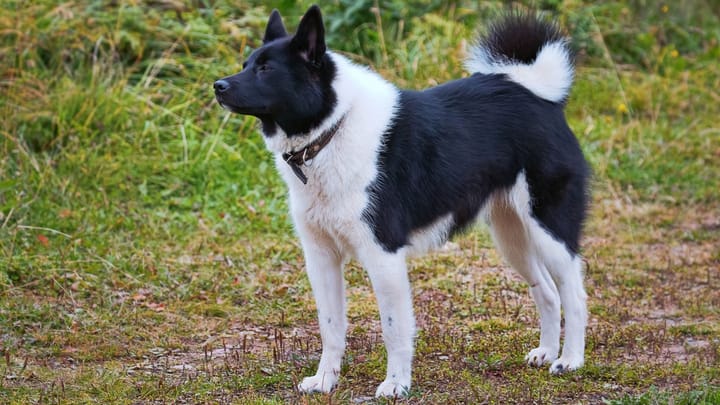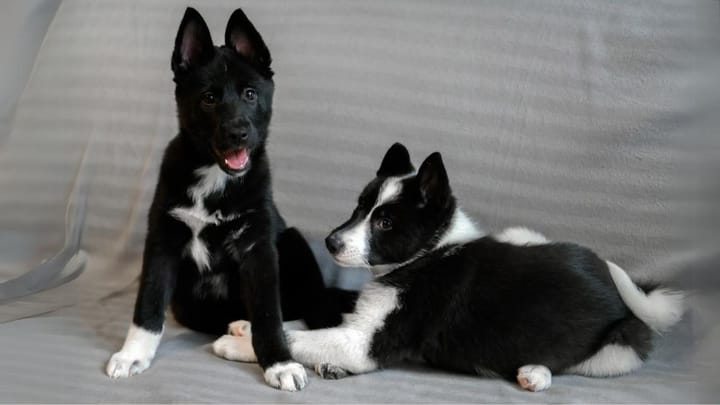Russian-European Laika
Other names : Russo-European Laika, Russko-Evropeïskaïa Laïka


This adorable Russian hunting dog emerged from among the Laika breeds in the middle of the twentieth century; a fine specimen of the Russo-European Laika might be considered the most visually attractive of the Laika, since he retains much of the charming Asian spitz heritage that he has gathered along the way, with a healthy dose of wolf in the mix, as well. The Russo-European Laika is very family-oriented and can be both protective and affectionate towards those humans in whose bosom he is held. His hunting instinct remains strong, so beware local squirrels!
|
Life expectancy |
The Russian-European Laika has a life expectancy of between 10 and 12 years |
|
Temperament |
|
|
Size |
Medium
|
|
Adult size |
Female
Between 19 and 21 in
Male
Between 20 and 23 in
|
|
Adult weight |
Female
Between 44 and 66 lb
Male
Between 44 and 66 lb
|
|
Coat colour
Black with white, all white, or all black. |
Black White |
|
Type of coat
Double: harsh, straight outer coat and thick, woolly inner coat. |
Hard Long |
|
Eye colour
Dark brown. |
Brown
|
It can be hard to find a Russian-European Laika pup so start your search as soon as possible. This is a dog who does not think twice before tackling animals much bigger than him, while maintaining his composure. He avoids attacks from his opponents using a technique of feints, jumps and twirls unknown in other races.
More details about the Russian-European Laika
Russian-European Laika: Origins and history
First noted around the European forest areas of Russia at the end of the 19th century, Laika dogs from regions such as Komi, Udmurtia, Arkhangelsk, and Yaroslavl, were united under the banner of Russian-European Laika in 1947.
Physical characteristics of the Russian-European Laika
This cartoony doggo has a very Japanese look about him thanks in part to the abundance of fur around his neck, which forms a collar or scarf and lends him the feel of a Shiba Inu. Strongly-built and neatly-proportioned, he also looks like a petit Karelian Bear Dog, and his triangular, ink-drawn face is teddy-bearish to the point of irresistibility. Indeed, the only draw-back is that this handsome hound is almost too perfectly drawn to be believed. Once on the move, he performs with a grace and suppleness of gesture that seems to belie his strength and potential ferocity. His tail, as with the other Laika breeds, is a bushy sickle of a thing, and it suits him much better than it does the East and West Siberian Laikas. He consistently looks clever and engaged, which he more or less is.
FCI classification of the Russian-European Laika
-
Group 5 - Spitz and primitive types
-
Section 2 : Nordic Hunting Dogs
Russian-European Laika: Characteristics
Russian-European Laika: Behaviour
Training a Russian-European Laika
An experienced owner will have little trouble training this clever and engaged dog. His education requires patience, firmness, and gentleness, and his lessons should be interesting and varied.
Russian-European Laika: Lifestyle
Breed compatibility Russian-European Laika
Russian-European Laika: Purchase price
We do not have enough data to set an average price. Looking after a dog of this size typically costs between £70 to £100 a month, including food, medical/insurance, and incidental expenses.
Russian-European Laika: Grooming
Weekly brushing around the year, with daily brushing while he’s shedding.
Russian-European Laika: Health
As long as he’s well-exercised, the Russian-European Laika will usually keep good health. Its average life expectancy is 10 to 12 years.
This dog is hardy, hearty, and ready to go.
Water and shelter should be available in a heat wave.
He is well-designed for cold weather.
This active and sporty breed is not concerned with weight issues.
- Cryptorchidism
- Umbilical Hernia
Do you want a Russian-European Laika dog ?
Oh no...
There are no Russian-European Laika adoption profiles at the moment...





